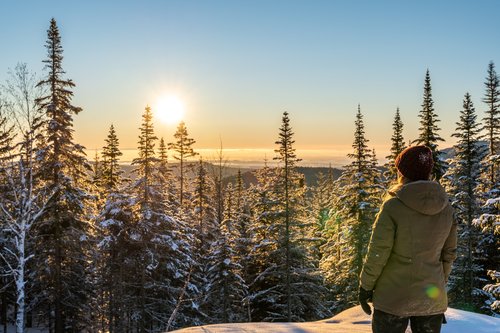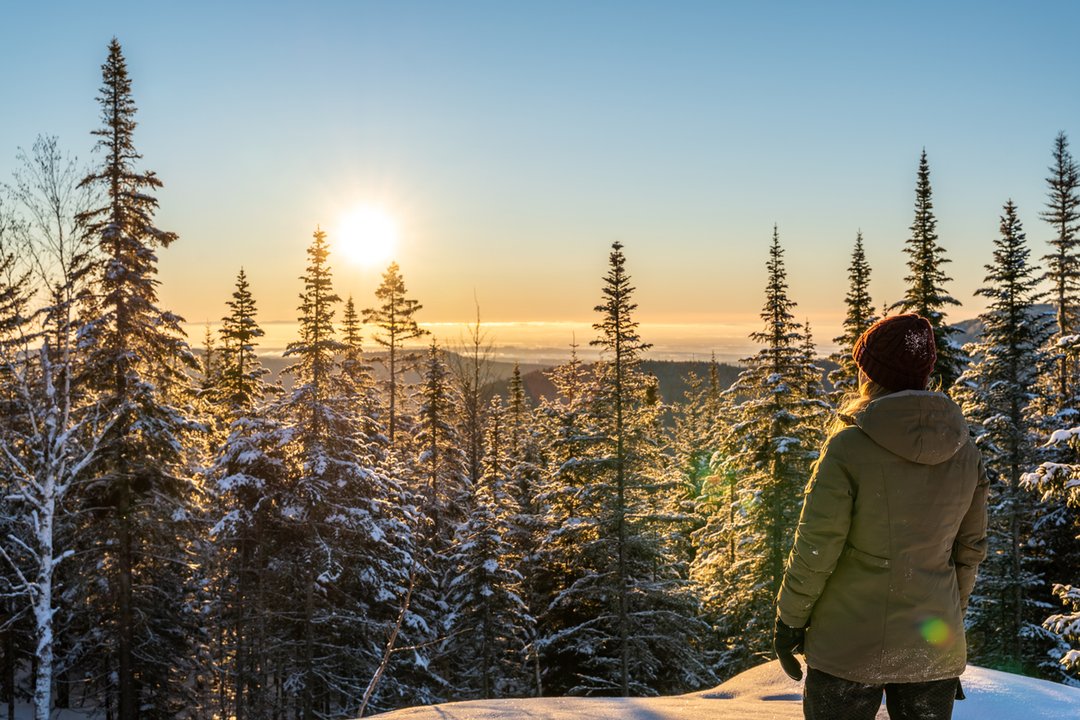
This season offers a chance to slow down and reflect on our lives.

iStock-1449844570
This year, I’ve been away from my home for 13 days, most of the month of January. That’s 13 days more than I would’ve liked. Although it rarely works out this way, I usually try to stay in one place for the whole of January and February because for me, winter offers an invitation to hunker down and retreat. Just as the rest of the natural world seems to enter some sort of fallow season, I suspect our own bodies and minds could benefit from the slowing down that winter requires of us.
We tend to complain about the cold weather, the darkened days and prolonged nights, some of which truly can negatively affect our emotions. But winter also offers us opportunities to renew our relationship with the natural world. And to remember that our own lives can be experienced from fresh vantage points that serve us not only for this season but for the seasons yet to come.
I love the seeming simplicity of Winslow Homer’s 1893 painting “Fox Hunt”. A blanket of snow fills most of the canvas, with a dappling of cold, seafoam-green water in the background and a midnight-blue evening sky. It’s a desolate landscape, evoking feelings of frigid isolation. But despite initial appearances, there is a lot happening in the scene. Things to wonder and delight in, like the red berries on fragile branches popping against the white snow, or the gorgeous ochre-coloured coat of the fox darting through the snow, its front paw caught in mid-air. And also potential dangers: with only a quick glance it would be easy to miss the black crows on the right-hand side of the painting.
The world looks so different in this season, and it teaches me to see differently
Winter is a season of scarcity and survival requires more effort. The fox is hunting for food, the crows protecting their own resources. An extra alertness and intention may be required in winter in order to take care of our emotional, spiritual and mental wellbeing. I am much more discerning about guarding my time and how I allocate my energies in winter than I am in spring and summer. Because everything is more subdued, it feels like a season to honour quieter ways of living. I sleep more. I read more. I enjoy less social activity. I walk, appreciating the crispness of the air. The world looks so different in this season, and it teaches me to see differently.
I love Monet’s winter landscape “The Magpie”, painted in 1868-69. The canvas depicts a seeming eternity of snow and creates a stunning representation of bright winter light, one of the beautiful elements of what might otherwise seem like a harsh season. There are few things more magical in winter than a fresh snowfall that blankets the ground, the rooftops and the twisted branches of trees. The play of shadows against the radiant white creates that soft winter blue that’s cast across everything. It is a painting that feels like an exploration of winter, the cold, the beauty, the seeming isolation and lack of active life. We imagine the animals in hibernation, and people closed firmly behind warm doors. Only a lone magpie sits on the top of a small wooden fence, as if it were taking a moment to gaze upon the Earth’s seasonal performance.
Winter gives us an opportunity to appreciate that even as the days are darker, there is a new type of radiant light cast upon the world. There are seasons in our lives where it also seems like nothing is growing, changing or bearing fruit. Yet when things that had preoccupied us fall away, we can gain new perspective on our lives; just as in Monet’s work, the barren landscape allows us to see further towards the horizon. One of the gorgeous offerings of winter is the chance to pause and consider the wider landscape in which we live.
Pieter Brueghel’s 1565 “The Hunters in the Snow” is a canvas full of activity and people immersed in living within the season. The left half of the canvas shows men returning from hunting, a pack of dogs trailing behind them as they descend back into the village. In the corner, a few people tend to a fire; birds perch on the leafless branches overhead while down below we see a frozen lake with people skating and playing. In the bottom right of the painting we see a small figure of a woman carrying firewood across a snowy bridge. There is so much teeming life to witness, despite the sombre palette of greys, blues and browns. I love this work because it shows that life still goes on during the winter season. Work still must be done, play is still possible, life must still be lived. The hunting men haven’t captured very much but they still went out for the hunt.
In winter there is the time and space for pulling back, conserving our energies, reflecting and retreating. That is necessary. But there is also the call to stay engaged in the life of the world, with one another, outside in the very heart of the season. There’s a certain reinvigoration that comes from breathing winter air, and from choosing to live fully in what is offered in this season of life.
© 2024 The Financial Times Ltd. All rights reserved. Please do not copy and paste FT articles and redistribute by email or post to the web.
Comments are closed.
